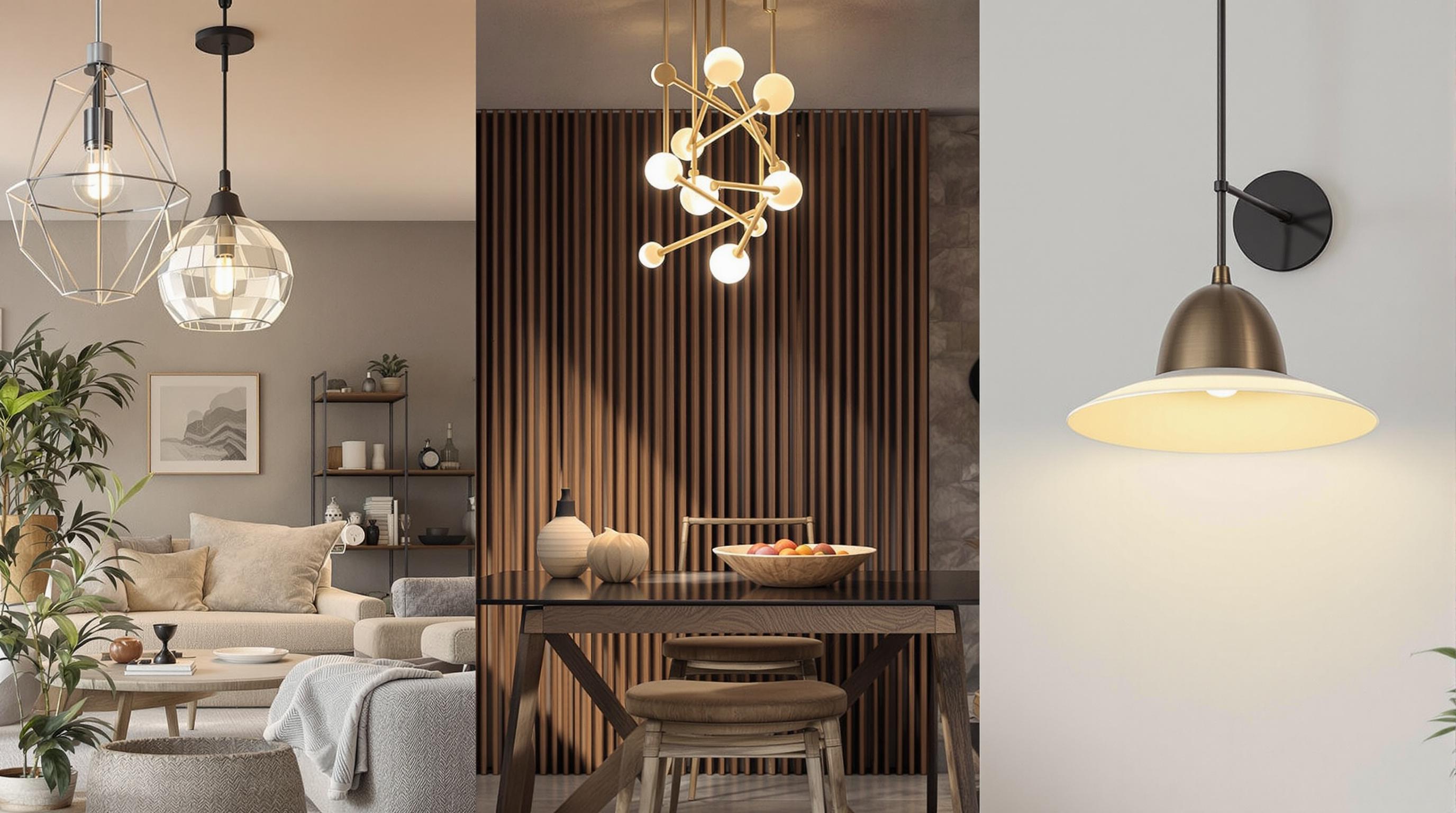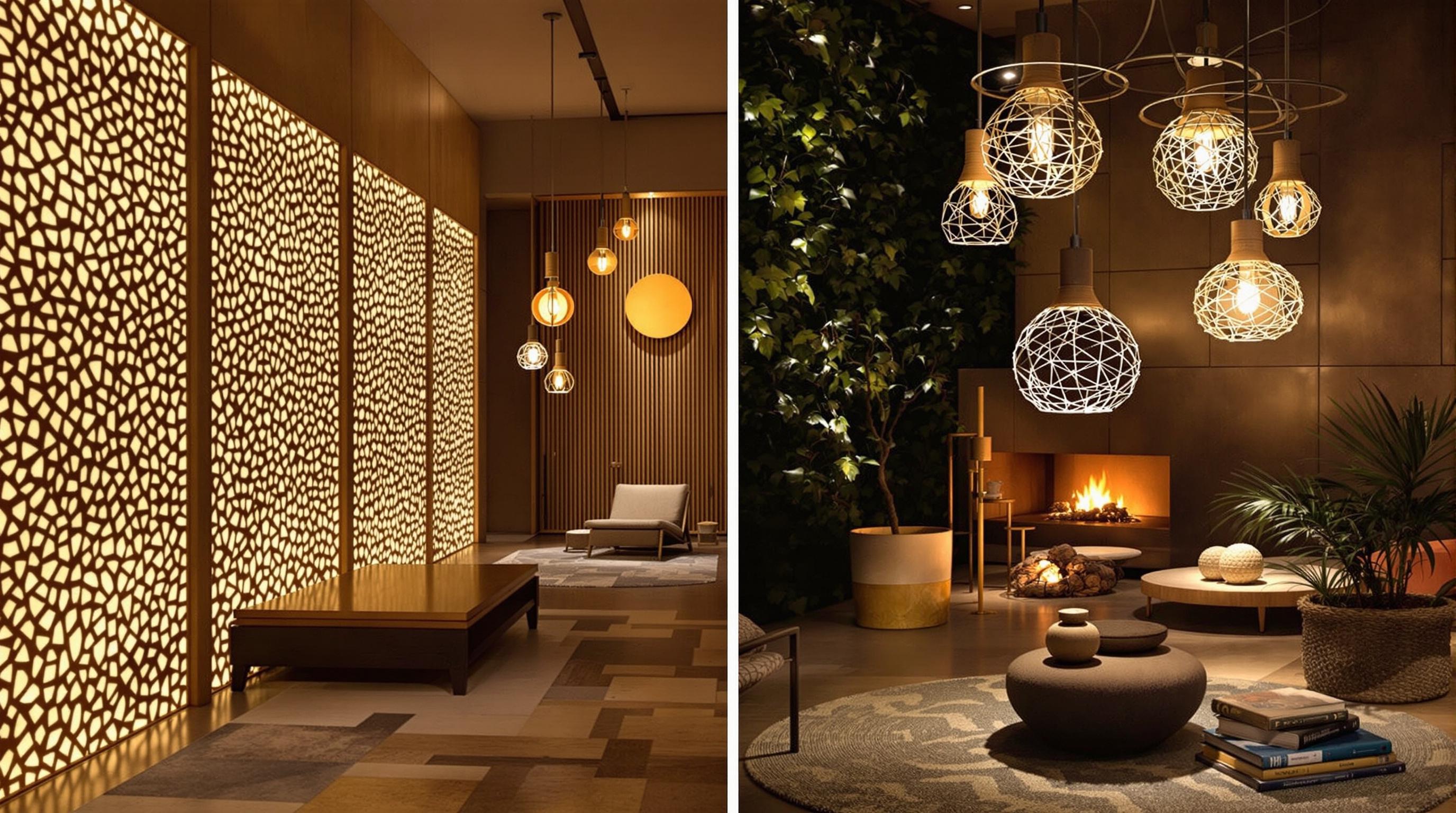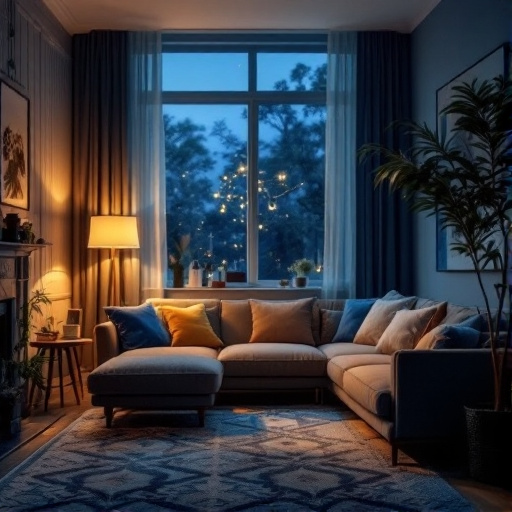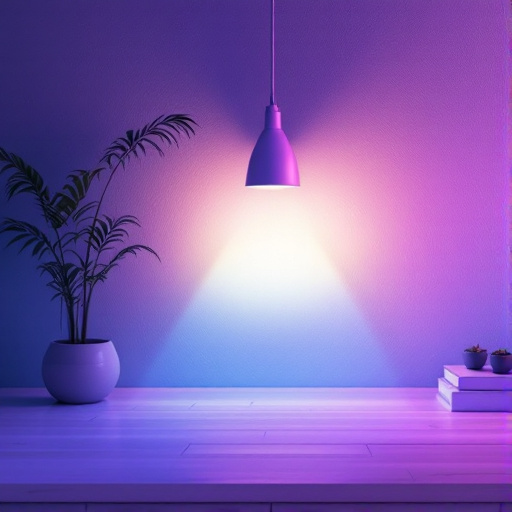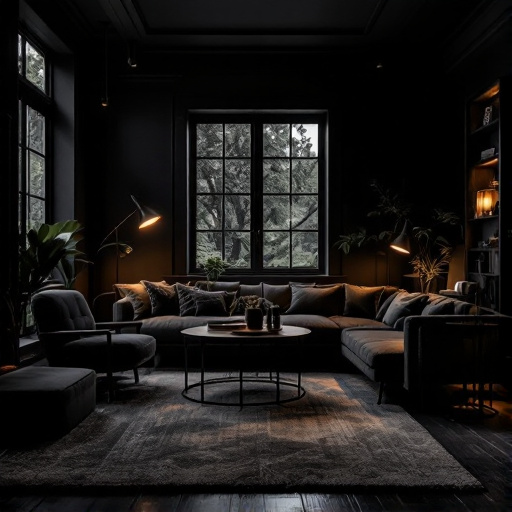Featured Articles
- 12 Innovative Home Lighting Ideas Inspired by Nature’s Hidden Patterns and Ancient Traditions
- 7 Best Human-Centric Lighting Fixtures Released Since 2019 That Truly Transform Your Living Space
- Illuminate Your Mood: How Color Psychology in Home Lighting Can Affect Your Emotions and Well-Being
- Illuminate Your Mood: The Surprising Psychology of Color in Home Lighting Choices
- "Illuminate Your Mood: The Surprising Science of Light Colors and Emotional Well-Being at Home"
Illuminate Your Mood: How Color Psychology in Home Lighting Can Affect Your Emotions and Well-Being
Illuminate Your Mood: How Color Psychology in Home Lighting Can Affect Your Emotions and Well-Being
Color psychology plays a vital role in how we perceive our environments, influencing both our emotions and overall well-being. This article explores the fascinating links between color, light, and mood, offering insights into using them effectively in your home.
The Science of Color and Mood
When light enters our surroundings, it carries both hue and intensity—two fundamental aspects that impact our emotions significantly. A 2018 study published in the journal “Color Research and Application” found that certain colors can trigger specific feelings; for example, red is often associated with energy and passion, while blue evokes calmness and serenity (Hupka et al., 2018). This intricate relationship between color and emotion is essential to consider when setting the ambiance of your home.
How Light Intensity Influences Your Feelings
It’s not just color that matters; the intensity of light can also dictate how we feel. Bright light can energize and uplift our spirits, while dim lighting often encourages relaxation and introspection. Have you ever noticed how candlelight makes a room feel intimate and cozy? Studies show that low-light environments increase the hormone melatonin, promoting relaxation (Horne & Reid, 2015).
Color Choices for Different Spaces
Choosing colors for different rooms can enhance specific emotions. For instance, a study in the journal “Environmental Psychology” highlights how yellow encourages creativity, making it a perfect choice for a home office (Küller et al., 2009). On the other hand, soft greens and blues in bedrooms reflect tranquility, promoting restful sleep and stress relief. Picture your bedroom infused with soft blue light at night—doesn’t it already feel like drifting off into a peaceful slumber?
Personal Stories and Color Experience
Everyone interacts with colors differently. There's a personal anecdote from a friend named Sarah who transformed her sunroom with splashes of orange and yellow. She noticed an immediate shift in mood—family gatherings became more vibrant and filled with laughter. “It’s like a mood booster,” she reports. Lighting can truly sculpt the mood of a space, making it more inviting and cheerful.
The Warmth of Red and Yellow
Colors like red and yellow are often labeled as ‘warm colors’ because they evoke feelings of warmth and intimacy. However, moderation is key. If everything in your living room is adorned with bright red walls and yellow decor, you might find yourself feeling overwhelmed instead of energized. A balanced approach—like pairing those bold hues with neutral tones—can create an invigorating but comfortable atmosphere.
Statistics and Case Studies
According to a 2021 survey by the American Society of Interior Designers, 72% of participants reported mood improvements after updating their living spaces with lighter colors and well-placed lighting fixtures (ASID, 2021). Moreover, another study revealed that people working in offices with natural light and well-coordinated colors reported a 33% increase in productivity and well-being. These statistics underscore the importance of thoughtfully considering color and light in our personal and professional spaces.
Lighting Techniques to Enhance Colors
Beyond the paint on your walls, lighting techniques such as layered lighting can enhance how colors are perceived in space. For example, using multiple sources of light (overhead fixtures, table lamps, and wall sconces) can create depth and dimensionality. This mixing of light sources allows colors to manifest differently at various times of day. Imagine having a soft, warm glow for evening relaxation and brighter, cooler tones during the day for effective reading or work.
Color for Relaxation: The Power of Blue and Green
If you're looking to create a sanctuary at home, consider soft blues and greens. A recent study published in “Frontiers in Psychology” highlights that people reported significantly lower stress levels in environments dominated by these hues (Shibata & Suzuki, 2020). Incorporating blue-toned LED bulbs around your living area or bedroom can help soften harsh lighting while promoting feelings of tranquility. Just remember to consider the intensity as well—too much blue light can disrupt sleep patterns, so find a balance that suits your needs.
Integrating Personal Style with Color Psychology
While this article highlights general trends, your personal style should always shine through. You don’t have to paint your walls in shades of beige just because research suggests it's calming. If you thrive in a lively, eclectic space with a burst of colors, embrace it! Use color psychology as a guide, not a rule. Your home should feel like a reflection of who you are and what makes you feel good.
X-Factor: Seasonal Changes
Imagine the world outside as the seasons shift—spring brings pastels, summer bursts with vibrant colors, autumn glows in rich earthy tones, and winter is all about cool, crisp blues and whites. Adapting your home lighting to reflect the seasons, such as using warmer tones in the winter for a cozy feeling or cooler tones in the summer for freshness, can align your mood with nature's rhythm. This adaptability can keep your environment feeling dynamic and engaging year-round.
Using Color for Better Sleep
Restful sleep is paramount for emotional well-being, and the right colors can make all the difference. According to a survey from the National Sleep Foundation, 58% of people reported better sleep quality in rooms painted in soft, muted colors (NSF, 2021). Consider a palette that includes soft lilacs or pale blues to create a sleep-friendly haven. Combined with warm lighting, you can promote relaxation and reduce the chances of insomnia.
Finding Your Perfect Value: Lighting and Color Adjustability
Innovative smart lighting technology in the market today allows for flexibility in both color and intensity. You can have the best of both worlds—bright white lighting for productivity during the day and cozy, warm yellow tones for evenings. Many smart bulbs also allow you to select specific colors according to your mood. This adjustability makes it easier to cater your environment to what you need at any given time.
Emotional Benefits of Natural Light
Natural light is one of the best allies for maintaining a positive mindset. Exposure to sunlight releases serotonin, which boosts your mood and helps ward off feelings of depression and anxiety. If you don’t have plenty of natural sunlight in your home, strategically placing mirrors can enhance light reflection and create a more open, airy atmosphere. Configure your space to maximize natural light while enjoying your playful use of color!
Conclusion: A Path to Wellness Through Color and Light
Incorporating thoughtful color and lighting choices can transform your living spaces from mundane to extraordinary. Whether you opt for the calming effects of blue or the energizing vibe of yellow, understanding how the interplay between light and color impacts your mood is a key step toward creating a sanctuary of well-being. After all, your home should not just be a place to live, but a space that invigorates, relaxes, and nurtures you.
Ultimately, find joy in the exploration of colors and lighting in your home. Experiment, make bold choices, and allow your personal style to take center stage. Who knows? You might just discover your own favorite combination that lights up both your home and your spirit!
